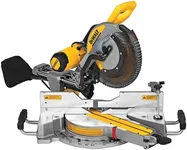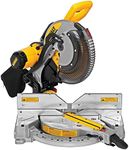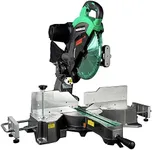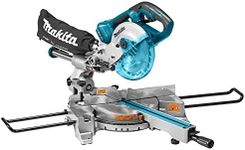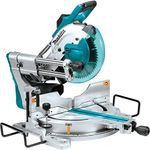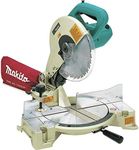Buying Guide for the Best Compound Miter Saws
Choosing the right compound miter saw can make woodworking, home improvement, and DIY projects much easier and more precise. The key is to understand what features matter most for your typical tasks, whether you’re cutting trim, framing lumber, or tackling more complex angles. By focusing on the main specifications, you can find a saw that matches your needs and helps you work safely and efficiently.Blade SizeBlade size refers to the diameter of the saw blade, usually measured in inches. This is important because it determines the maximum width and thickness of material you can cut in a single pass. Common sizes are 8, 10, and 12 inches. Smaller blades are lighter and easier to handle, making them suitable for trim work and smaller pieces. Larger blades can cut through thicker and wider materials, which is useful for framing or larger woodworking projects. To pick the right blade size, consider the types of materials and the size of pieces you’ll be cutting most often.
Miter RangeThe miter range is the angle to which the saw table can rotate left and right, allowing you to make angled cuts. This is crucial for tasks like cutting corners for frames or molding. Most saws offer a range from 0 to 45 degrees on both sides, but some go further. If you often work with complex angles or need flexibility, a wider miter range is helpful. For basic projects, a standard range is usually enough.
Bevel RangeBevel range describes how far the saw head can tilt to the left or right, letting you make beveled cuts. Some saws tilt only one way (single bevel), while others tilt both ways (dual bevel). Dual bevel saws are more versatile and save time since you don’t have to flip your workpiece. If you frequently make compound cuts (both miter and bevel at once), or want to work faster, a dual bevel saw is a good choice. For occasional or simple bevel cuts, a single bevel saw may suffice.
Sliding vs. Non-SlidingA sliding compound miter saw has rails that let the blade move forward and backward, increasing the maximum cut width. This is important if you need to cut wide boards or panels. Non-sliding saws are more compact and lighter, making them easier to move and store, but they have a more limited cutting capacity. If you often cut wide materials, a sliding saw is beneficial. For smaller, more portable needs, a non-sliding saw may be better.
Cutting CapacityCutting capacity refers to the maximum size of material the saw can cut, both in terms of width and thickness. This is determined by the blade size, sliding feature, and the design of the saw. It’s important because it tells you what size of wood or other materials you can handle. If you plan to cut large baseboards, crown molding, or thick lumber, look for a saw with a higher cutting capacity. For smaller trim or craft projects, a lower capacity is usually sufficient.
Laser Guide or LED Shadow LineSome miter saws come with a laser guide or an LED shadow line to help you see exactly where the blade will cut. This feature is important for accuracy, especially if you’re new to using miter saws or need to make precise cuts. A laser projects a line onto your workpiece, while an LED shadow line shows the blade’s actual path. If you value precision and want to reduce mistakes, look for a saw with one of these guides.
Dust CollectionDust collection refers to the saw’s ability to capture sawdust as you cut, usually through a bag or a port for a vacuum. This is important for keeping your workspace clean and for your health, as sawdust can be harmful if inhaled. Some saws have more effective dust collection systems than others. If you work indoors or want to minimize cleanup, prioritize a saw with good dust collection features.
Weight and PortabilityThe weight and portability of a miter saw affect how easy it is to move and store. Heavier saws are often more stable and durable, but can be difficult to transport. Lighter saws are easier to carry to different job sites or move around your workshop. If you need to move your saw frequently, look for a lighter, more portable model. If it will stay in one place, weight is less of a concern.


